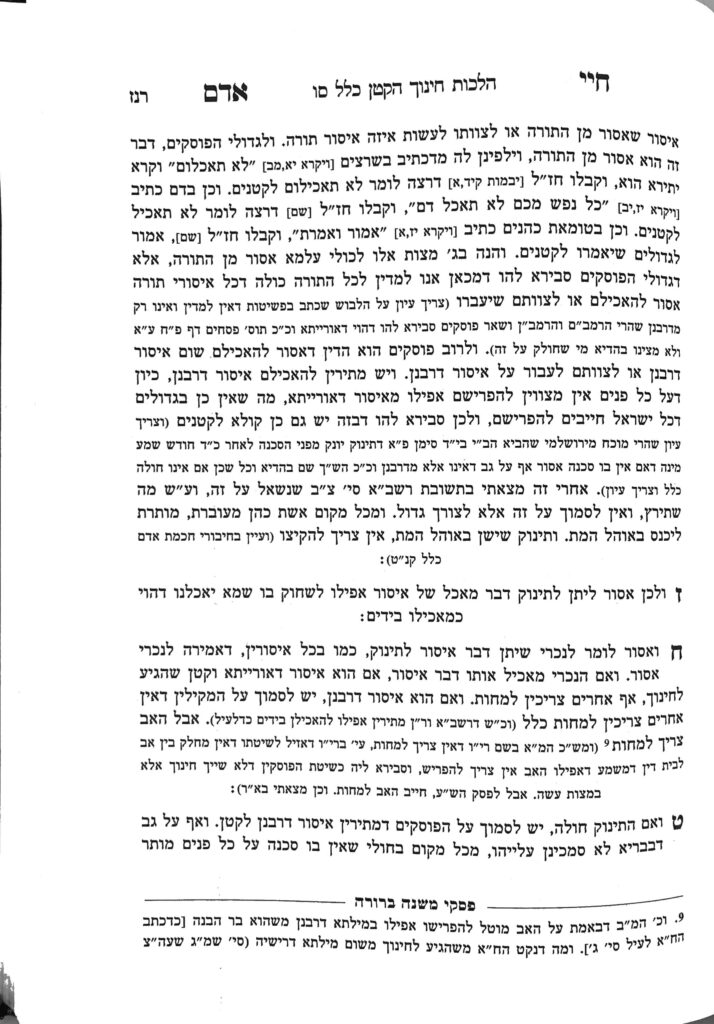We are continuing in siman 6. We learned that a pregnant woman married to a kohen may come in contact with tumas meis (e.g., enter a hospital), either because of a sfeik sfeika or because of the concept of tahara beluah. Nevertheless, we learned that due to the sfeikos, if she has no pressing need to be in such a situation, she should avoid doing so.
In America, where the meisim in the hospital are not necessarily Jewish, the question becomes whether ohel hameis applies to a non-Jewish corpse. The Shulchan Aruch paskens that it is appropriate to avoid the situation, but not a chiyuv. Thus, in America, one has another consideration to be meikil. In Eretz Yisroel, where the meis must be presumed Jewish, the question applies again. However, many times, the hospital building is set up in a way that the tumas meis does not transfer to other areas in the hospital.
Nonetheless, even in a situation where one knows with certainty that there is a Jewish meis and that the tumah transfers to the woman’s area of the hospital, there is no issur tumah for her to enter the hospital, only on the child. Thus, for the purposes of safety, health, and so on, she is allowed to cause her unborn child to transgress that issur, as we explained before.
Once the child is born, there is no chiyuv to move the child out of the hospital, because it is necessary for the child to be in proximity of his mother when born. It is not considered sefiya b’yadayim to maintain the child in the hospital, because the child is already there. Some poskim recommend that when it is known that there is a Jewish meis and the hospital is constructed in a way that that tumas meis transfers to the area of the baby, it is preferable to strive to remove the child as quickly as possible, once it becomes feasible.
The Chayei Adam writes that if a child who is a kohen is sleeping in an ohel hameis, one does not have to wake him, even though one would have to wake an adult. Even in a scenario of an adult, according to the opinion of the Rema, if the kohen is not dressed properly to go outside, one may first instruct him to get dressed before informing him of the tumah. Once they have been informed of the tumah, they must leave immediately, even if they are not properly dressed. The Gemara in Brachos discusses that kavod habriyos (in this case, not being fully dressed), does not allow one to actively transgress an issur deoraysa. Staying put in an ohel hameis is considered an active transgression, in the same way that continually wearing a garment of shatnez is considered an active transgression.
However, regarding informing the kohen of the tumah, the informant has a chiyuv to inform the kohen. However, withholding information is only a passive action (shev v’al taaseh). Therefore, due to kavod habriyos, one can wait to inform the kohen until after they have gotten dressed.
The above is the opinion of the Rema, and is accepted by the Chochmas Adam. It is based on the opinion of the Rosh is hilchos kilayim, where he writes that if a person realizes that their beged is kilayim while they are wearing it, they are mechuyav to disrobe immediately, regardless of public embarrassment. Therefore, the Rosh writes that one may wait to inform the wearer of their kilayim until they are in a private place. Even though the wearer is actively transgressing an issur until they reach the private place, they are doing so b’shogeig. The informant only transgresses passively, and it is overruled by the consideration of kavod habriyos.
Although the Rambam disagrees with the Rosh, this is the psak of the Rema and Chochmas Adam.
Regarding a katan, the Chayei Adam wrote that one has no chiyuv to wake up the child, since the adult is not causing sefiya b’yadayim, but simply leaving the situation as is. However, the father would seem to have a chiyuv to wake their son. The Mishnah Berurah writes that one does not have to wake up the child until they are of the age of chinuch, because until then they need to remain with their mother. In such a case, one should not inform the child of the tumah.
Summary
- A pregnant woman married to a kohen may enter a place with a possible tumas meis (e.g., a hospital) if necessary. If it is not necessary, she should try to avoid it.
- Once the child is born, the child does not need to be removed until it is safe and feasible for them.
- If one needs to inform a kohen of tumas meis in order for them to leave that area, they may wait until the kohen is appropriately dressed before informing them.
- One does not have to inform a katan, but a father should inform him once he is the age of chinuch.



